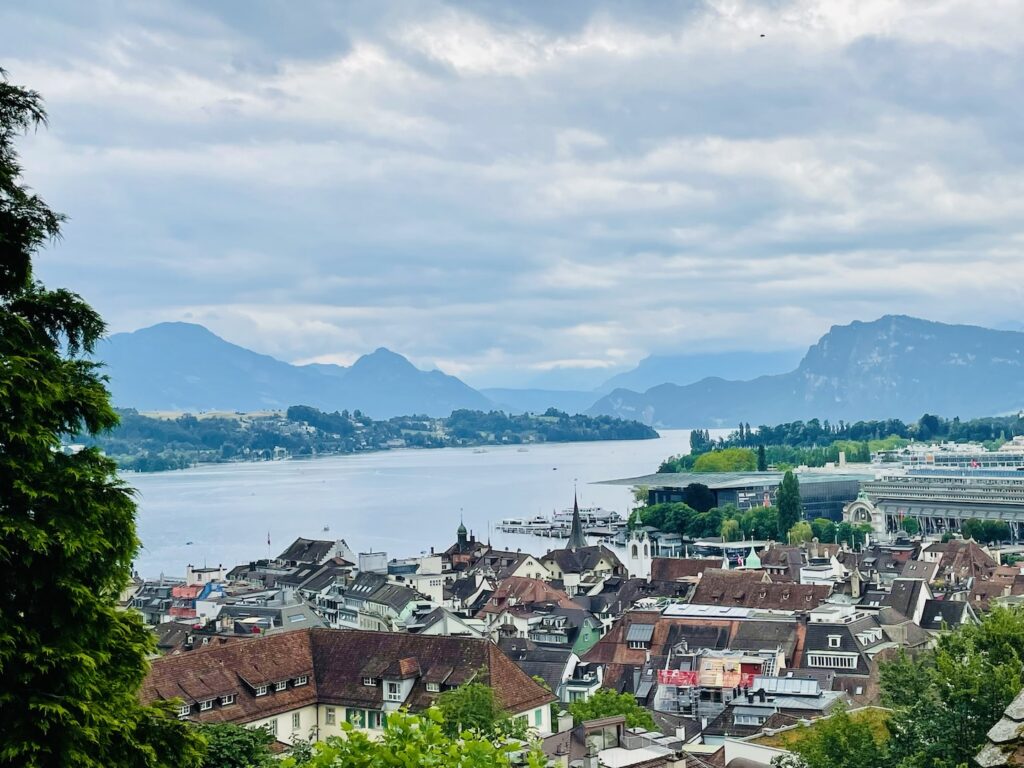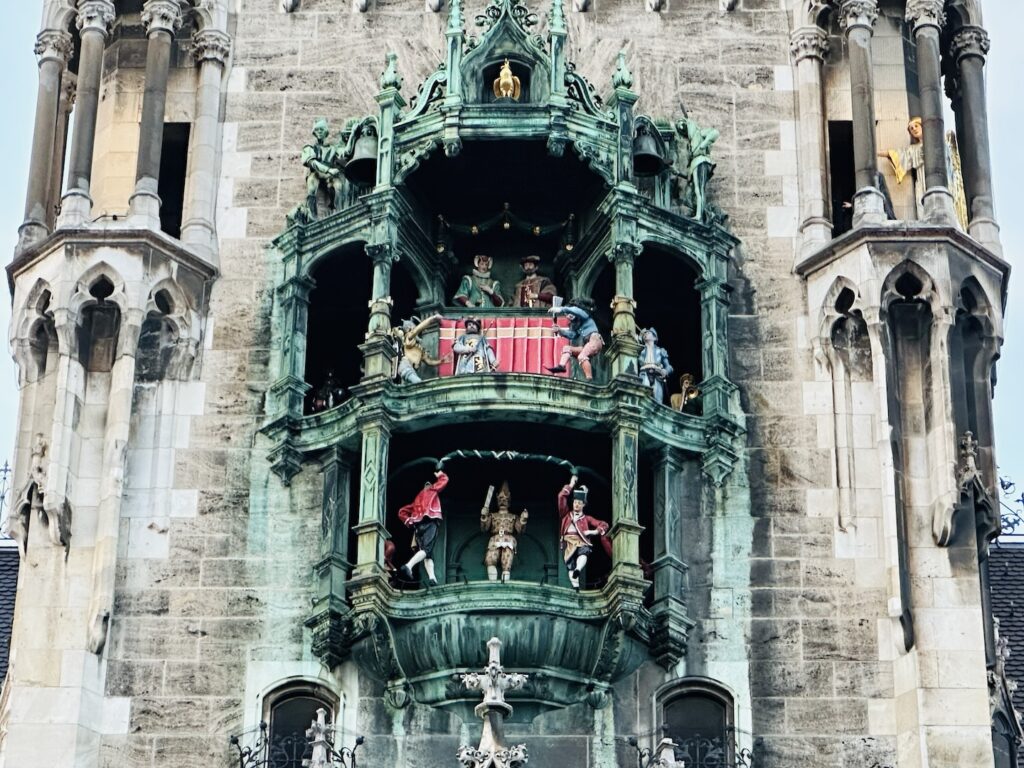Saint-Émilion is a beautiful medieval town and a wine appellation in southwest France. It sits on the right bank of the Garonne River, about 30 miles/50 km east of Bordeaux. It was named for an 8th-century Benedictine monk, Emilian. The village and the surrounding vineyards became a UNESCO World Heritage Site in 1999. A village comprising about 10 square miles/27 sq km, Saint-Émilion is a place where you won’t need or want to check off a bunch of sights and call it a day. Instead, you’ll probably enjoy this special place more by slowing down the pace and walking the meandering streets – with shops, boutiques, wine bars, and restaurants – to explore. One thing I highly encourage you to do, though, is to sample the macarons, a sweet treat that originated here.
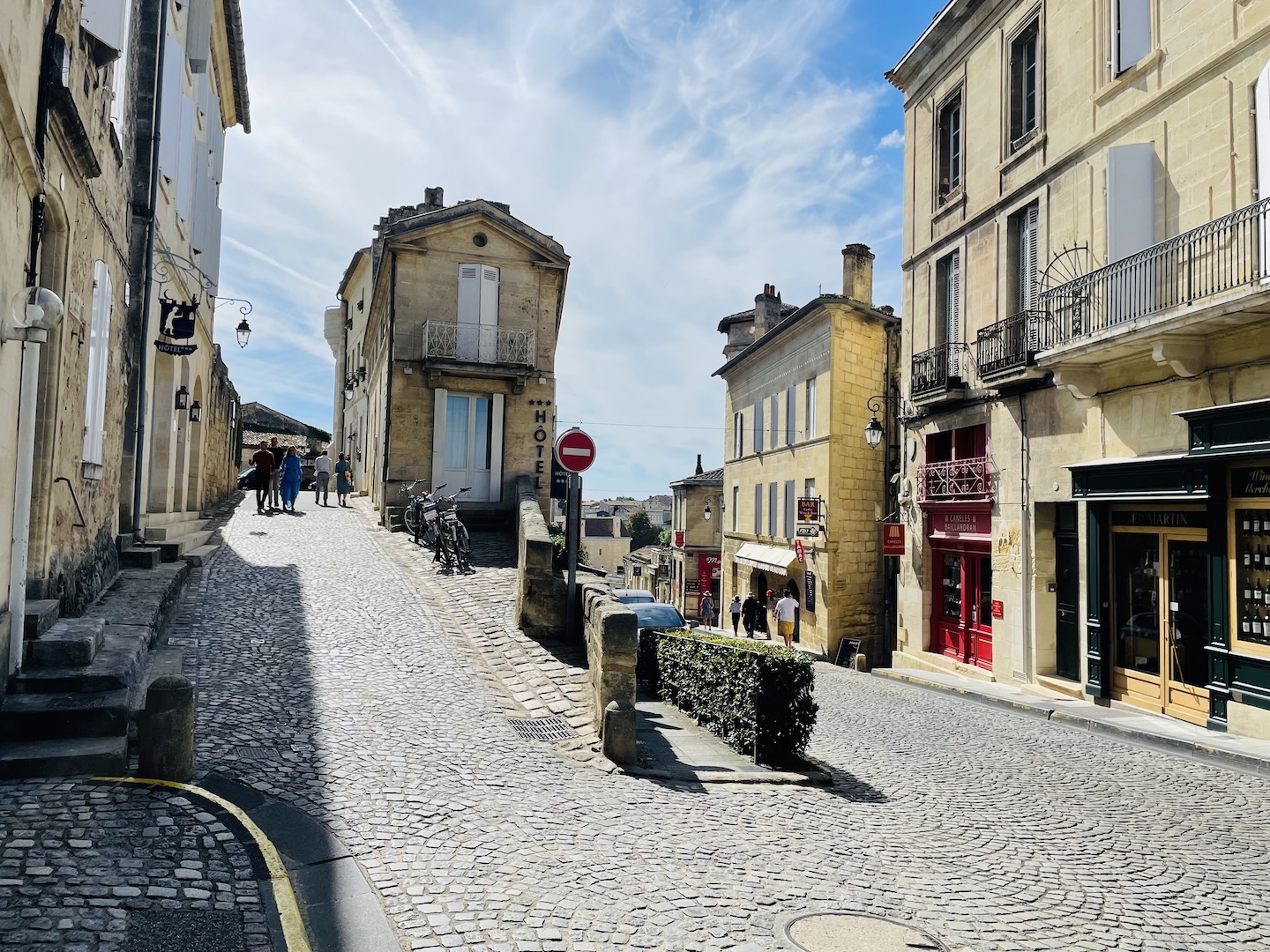
A Day Trip from Bordeaux
Visit Saint-Émilion for its quaint medieval and modern charms and the dozens of surrounding vineyards. Saint-Émilion makes a perfect day trip (or a weekend). That’s exactly what my husband did. Before our trip, I arranged for some winery visits in the late morning and late afternoon and spent the middle hours in the village. It turned out to be a perfect day trip from Bordeaux.
We began our journey to southwest France by taking a high-speed TGV train from Paris to Bordeaux’s Gare St. Jean train station, where we rented a car. First, we drove to Sarlat, a charming medieval town about a two-hour drive from Bordeaux, for several days. From there, we visited châteaux, an amazing cave art museum, and nearby villages. Later, we returned to Bordeaux and checked into our lovely B&B in town. The next day, we drove to Saint-Émilion for a day and then returned to Bordeaux for several days to explore that historic city.
Saint-Émilion Highlights
Although Saint-Émilion is a wonderful place to have a relaxing visit, there are a few noteworthy places to explore.
1. Monolithic Church (Eglise Monolithe de Saint-Emilion)
Tour the massive monolithic church, designed as a reliquary of Saint-Émilion and built from a single rock (hence, it’s monolithic) in the 12th century. The 45-minute tour provides the context of this special place, how it was carved and built, the artwork and worship spaces within it, and the ongoing preservation efforts. Visiting this structure was an incredible experience, traversing the underground wonder that was created centuries ago. Place du Marche TIP: Book your tickets for an English tour from the Saint-ÉmilionTourism Office ahead of your trip.
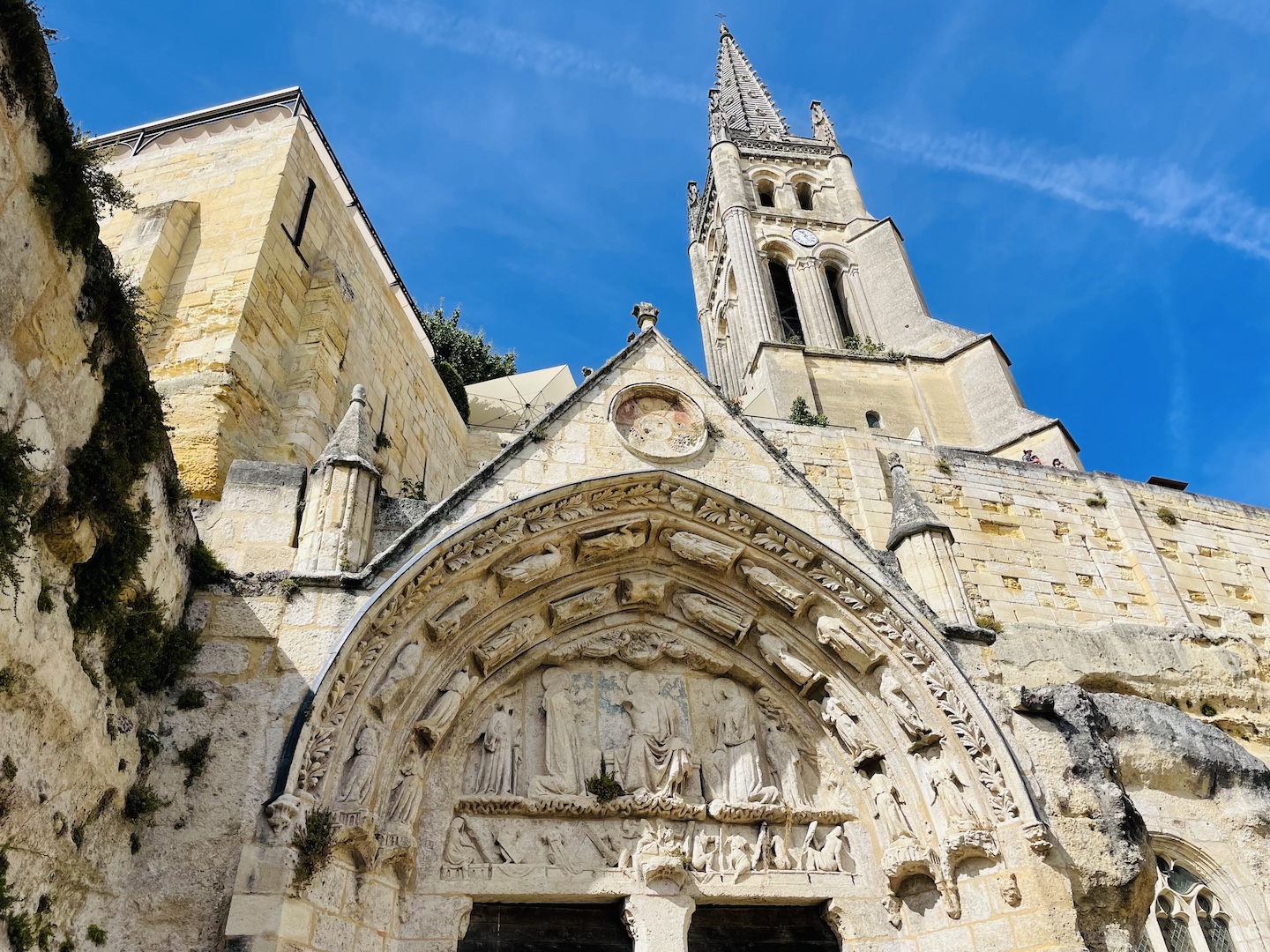
2. King’s Keep (Tour du Roy)
Climb the 100+ steps to the top of the 105-foot/32-meter tall King’s Keep for a commanding view of the town and beyond. The King’s Keep was built in the Middle Ages as an impressive testament to the town’s influence. Get your tickets at the Saint-Émilion Tourism Office when you’re in town. Open February-November | Place du Clocher | €2 admission
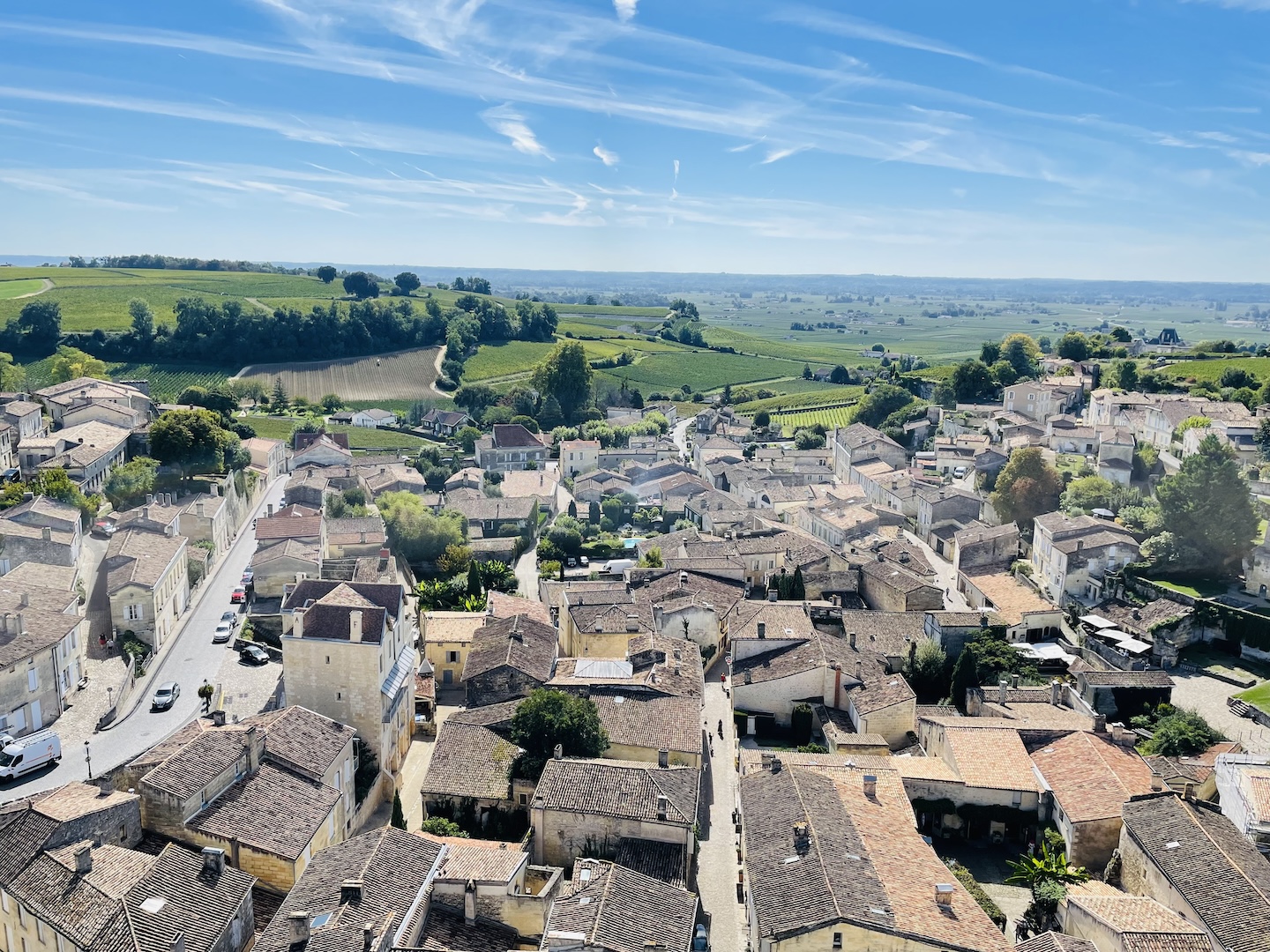
3. Collegiate Church (Eglise Collegiale de Saint-Emilion)
Built in the 12th century and expanded over the centuries, the Collegiate Church includes a cloister and garden, its prominent worship space, and the massive The Apocalypse painting. It is located just behind the TI office. Place Pierre Meyrat
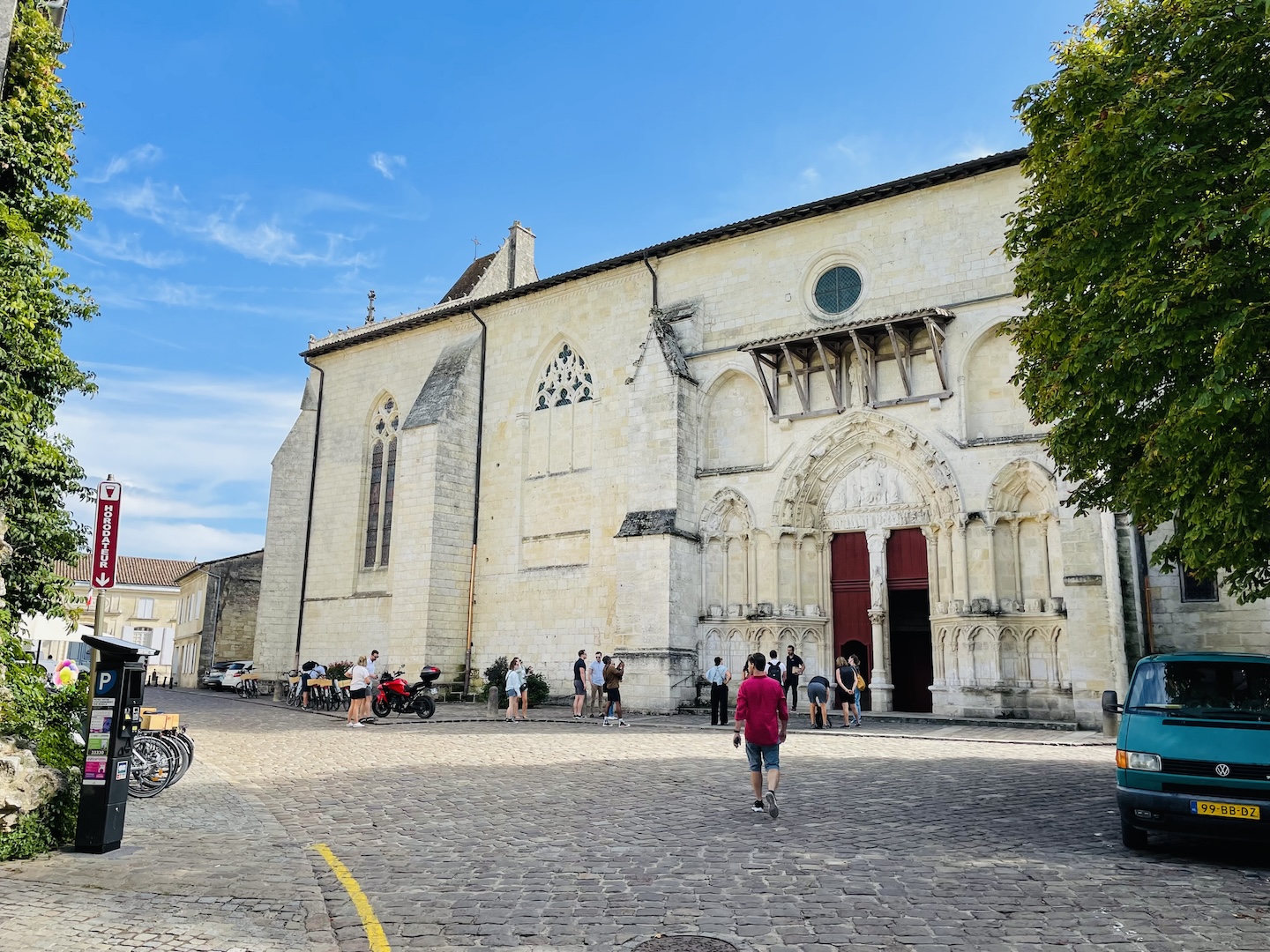
4. Cordeliers Cloister (Cloître des Cordeliers)
Since the 1890s, Cordeliers Cloister has been producing sparkling wine – some of it award-winning. The wine is stored in the cloister cellars. Visitors can tour the facility or walk around on their own. There’s a bar offering wine tastings as well as cheese, baguettes, and other picnic makings. A shop sells wines and accessories. By the way, cordeliers refer to the knotted ropes that hung over the Franciscan monks’ cloaks. Open every day in the spring, summer, and fall |2 bis rue de la porte Brunet | +33 557 24 42 13
5. Traditional Sweets
Sample macarons traditionnels from a recipe handed down from the Ursuline sisters, a religious order, from 1620. The recipe for these sweet treats – made from ground almonds, sugar, and fresh egg whites – has been passed down for centuries. Purchase some of Fabrique de Macarons for the real deal. There are plenty of other sources of macarons in town, but Fabrique de Macarons is the only place that uses a recipe from over 400 years ago. 9 rue Guadet | +34 629 19 67 36
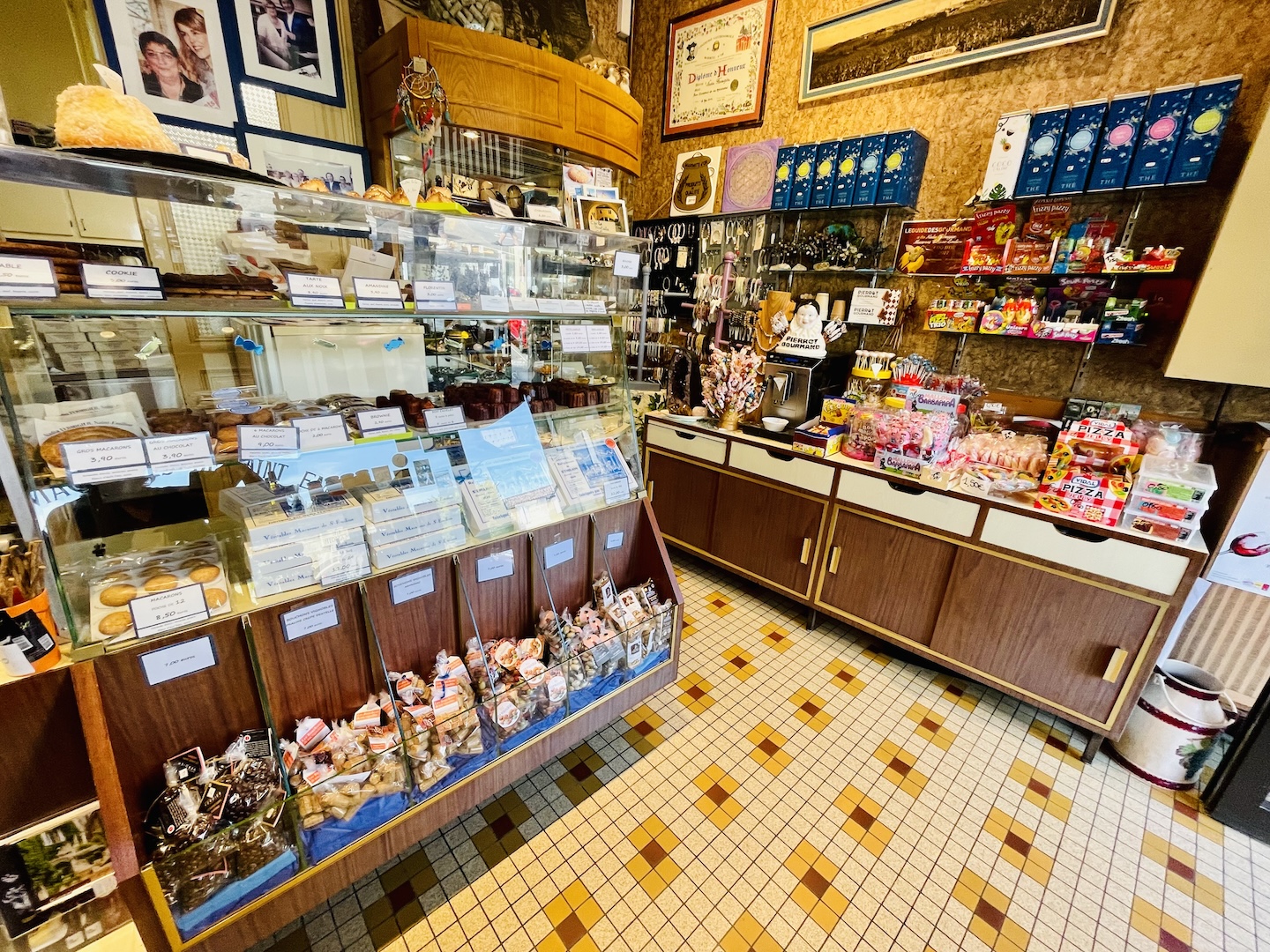
6. Winery Visits
There are dozens of wineries open for visitors in the area. Most require advance reservations which is easy to do via email. We especially enjoyed our entertaining visits to Château Laniote to see firsthand how they harvested and produced the wine and Château Cantenac to learn the history of this award-winning winery.
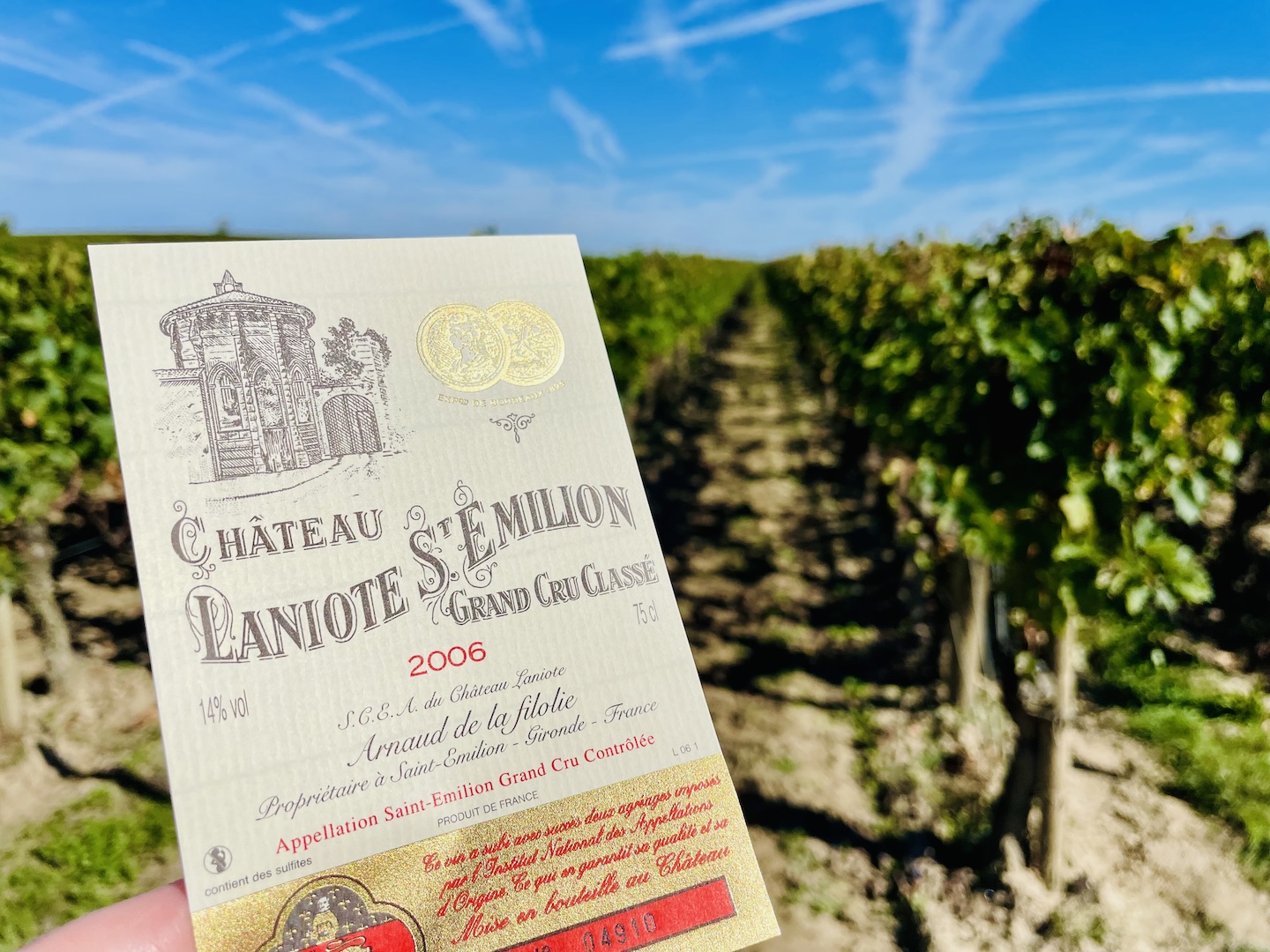
There are two main options for finding a winery or two that appeal to you:
- Do an online search (e.g., TripAdvisor, Google), read the reviews, and schedule your visits via email or the winery’s website..
- Access the Chateaux du Jour on the Tourist Information website, enter the date you’ll be visiting, and obtain a listing of the châteaux open for visitors that day.
- Note that the Tourist Information site lists some of the many wineries open each day. I found the ones I wanted to visit by doing online searches for reviews and booked the visits myself. The ones I selected were not on the Tourist Information office’s list for the days we visited.
Tips for Your Visit to Saint-Émilion
- The Tourist information office is very helpful and offers a variety of activity ideas, from walking tours of the city, tours of vineyards, and hiking and biking trails. Check out their website to get an overview of all that Saint-Émilion offers. The office is open every day from 9:30 am to 1:00 pm and from 2:00 pm to 6:00 pm. Their phone number is +33 (0)5 57 55 28 28. The office is located at Le Doyenné – Place des Créneaux.
- There is a tourist train, Train des Grands Vignobles, that goes through the town and has the option of stopping at a chateau for a wine tasting.
- Wear comfortable walking shoes. This is a medieval town with cobblestone streets, several of which are on inclines, which can be a little slippery.
- Parking is limited. You may find parking at the free parking lot of the Gendarmerie (police station) and paid parking (around the collegiate church in the upper town and Place Bouqueyre at the bottom of the town).
- Public restrooms are located in the upper part of the town (by the Gendarmerie and Villemaurine parking areas and behind the Collegiate Church) and two at the bottom (near the old washhouses and Place Bouqueyre).
- Reservations are required to visit most wineries. You can make reservations online or by calling. I made reservations several weeks before my visit, and that worked well.
Brief History of Saint-Émilion
In the 8th century, a monk named Emilion sought refuge here from the Benedictine Order. It was said that he performed miracles and then attracted followers. The village’s position along the pilgrimage route to Santiago de Compostela and the prominence of the area due to wine production made it well-known. Structures were built, but the monolithic church is the most impressive (described above).
Saint-Émilion Area Vineyards
Winemaking is in Saint-Émilion’s DNA. The Romans first planted vineyards in this area in the 2nd century AD. Today, over 900 wine producers are in Saint-Émilion, with over two-thirds of the land cultivated for wine production. Red wine is the name of the game here. Merlot and Cabernet Franc are the primary grapes for wine production – with smaller quantities of Cabernet Sauvignon being used.
The classes of Saint-Émilion wines are set for 10 years, at which time châteaux must requalify for the distinction. This happens in the second year of a decade (e.g., 2022, 2032, 2042). There are four classifications for red wines in this appellation: Premier Grand Cru classé A, Premier Grand Cru classé B, and Grand Cru classé (listed from highest to lowest). There are strict qualifications vineyards must meet to earn the classifications, including the density of the number of rows per hectare, having the wine produced onsite, and blind tastings.
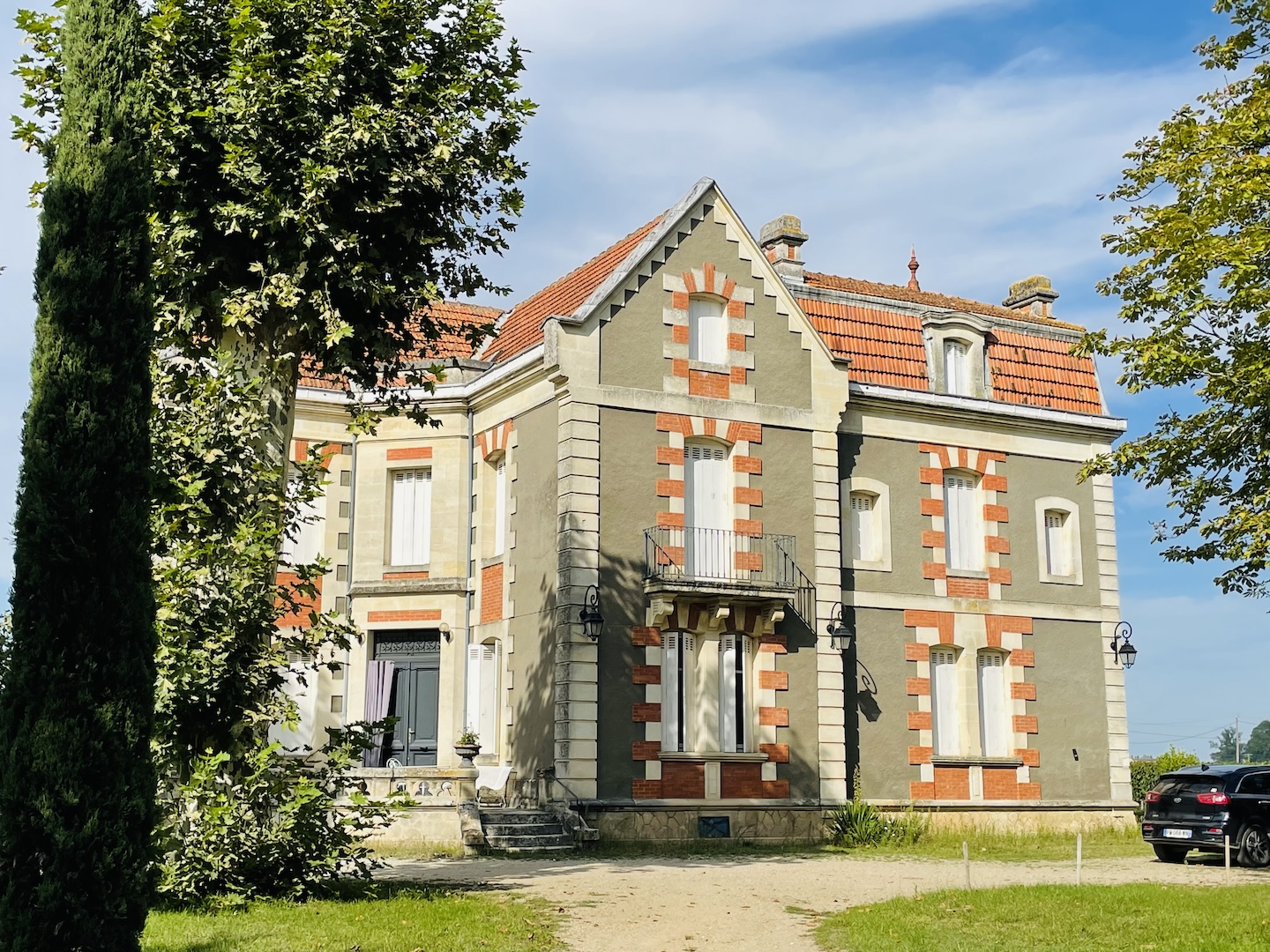
Map of Saint-Émilion
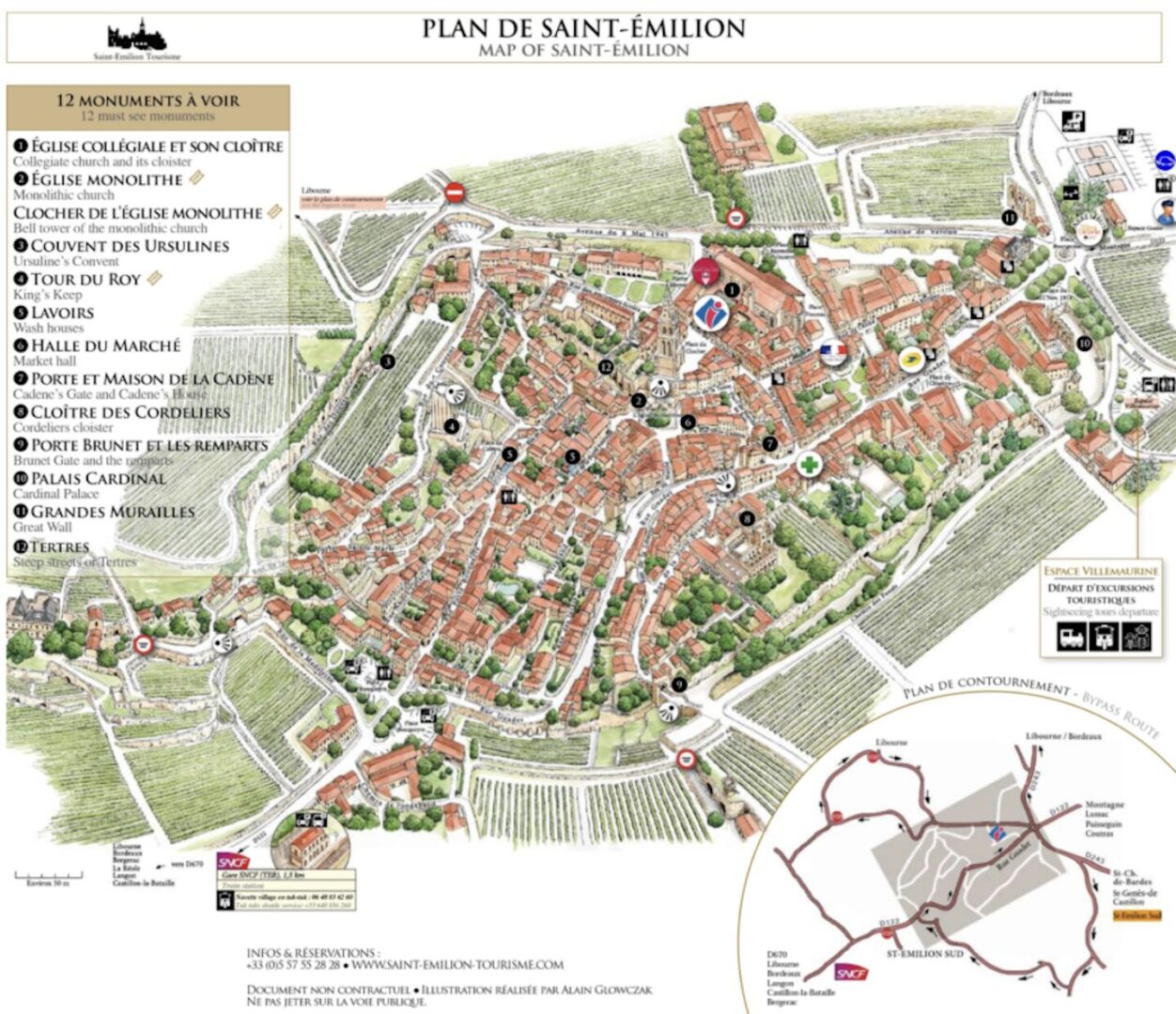
How to Get to Saint-Émilion
The best way to get from Saint-Émilion is by car, which is perfect if you have a rental car. If not, consider taking a guided tour from Bordeaux (search online for “Saint-Émilion guided tour from Bordeaux”).
- From Bergerac: about 40 miles/60 km, accessible by train
- From Bordeaux: about 30 miles/50 km, accessible by train
- From Paris: about 370 miles/590 km; a train is available from Paris to Bordeaux, where day trips are available
- From Sarlat-la-Canéda: about 90 miles/140 kilometers; accessible by train
- From Toulouse: about 150 miles/240 km; a train is available from Toulouse to Bordeaux, where day trips are available
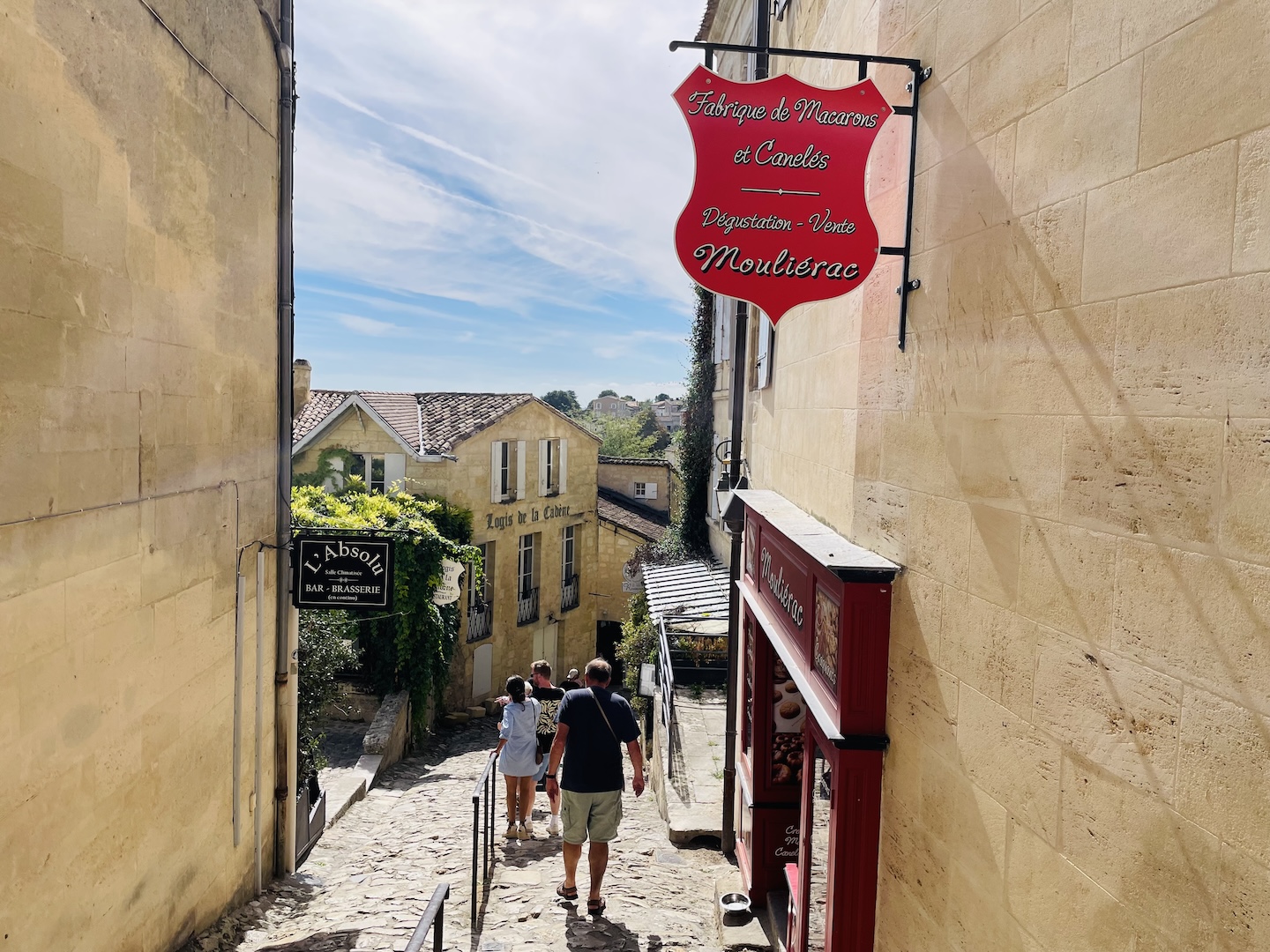
Related Articles
Related Articles: France
- Best Day Trips from Sarlat in Southwest France
- Bordeaux: The Beautiful Capital of a Historic French Wine-Producing Region
- Exploring France: Normandy, Brittany, Provence, Paris & More
- French High-Speed Trains: Tips for Your First TGV Ride
- Sarlat, France: A Marvelous Medieval Town to Explore
- Southwest France: Spend a Day Exploring Fascinating Châteaux & Gardens
- View Prehistoric Cave Art in Southwest France
Related Articles: Trip Planning
- Driving Tips for Europe
- Expert Tips for Traveling to Europe for More Fun, Less Stress
- Google Translate App: What You Need to Know
- How to Find the Perfect Short-Term Vacation Rental
- How to Plan a Great Trip
- Must-Have Travel Apps & Websites
- Tips for Renting a Car in Europe
- Travel Lightly: Top 10 Tips for Packing Lightly
- Travel Planning Timeline
Final Thoughts
My husband and I thoroughly enjoyed the range of experiences we enjoyed on our day trip to Saint-Émilion. We had fun exploring the village and its main sites, learning about its rich history dating back so many centuries, lunching at Lard et Bouchon (22 rue Guadet), and visiting several area vineyards.
Comments?
Feel free to share your experiences in Saint-Émilion and/or suggestions for other places to visit and things to do in the area. Your ideas could be helpful to other travelers. Thanks! 🙂

